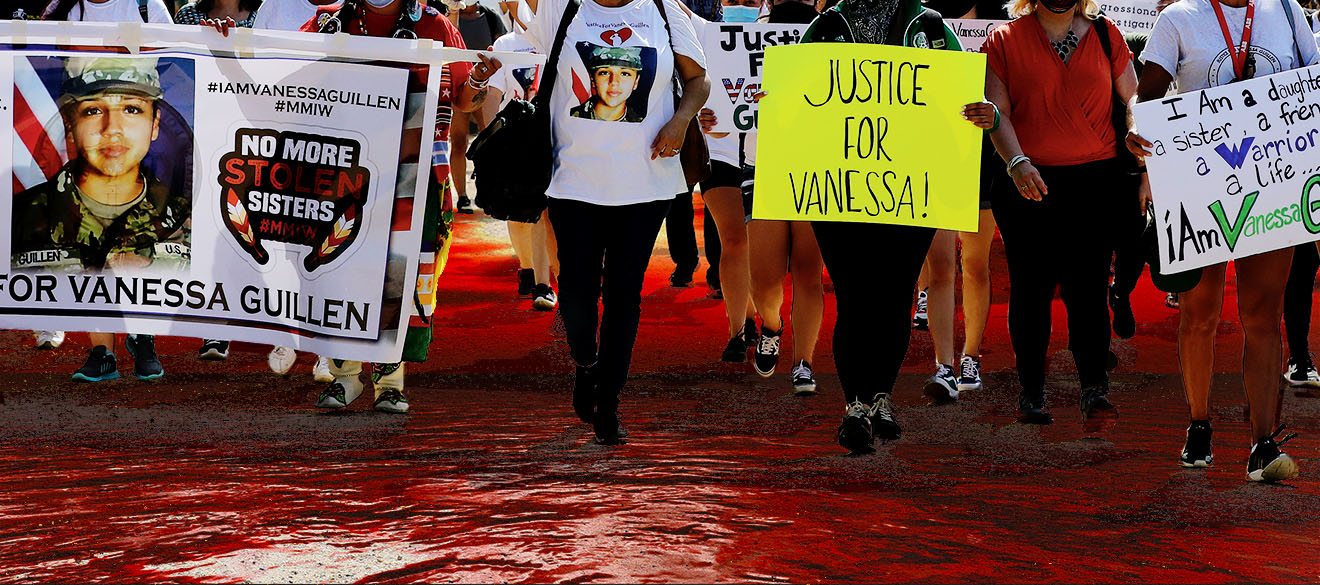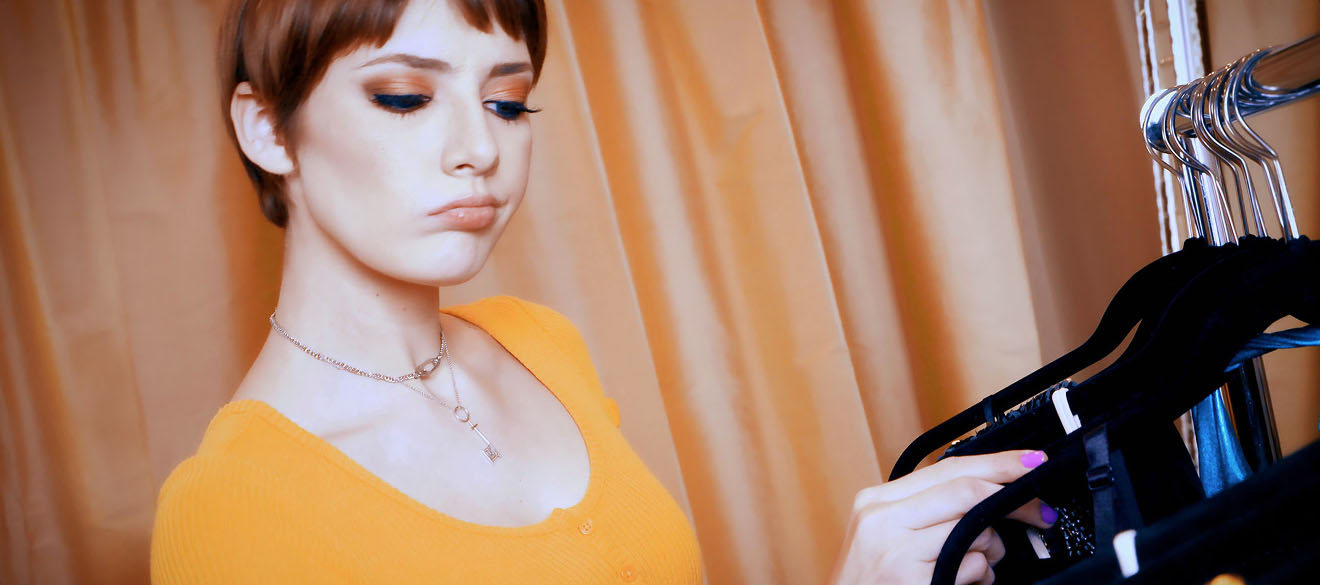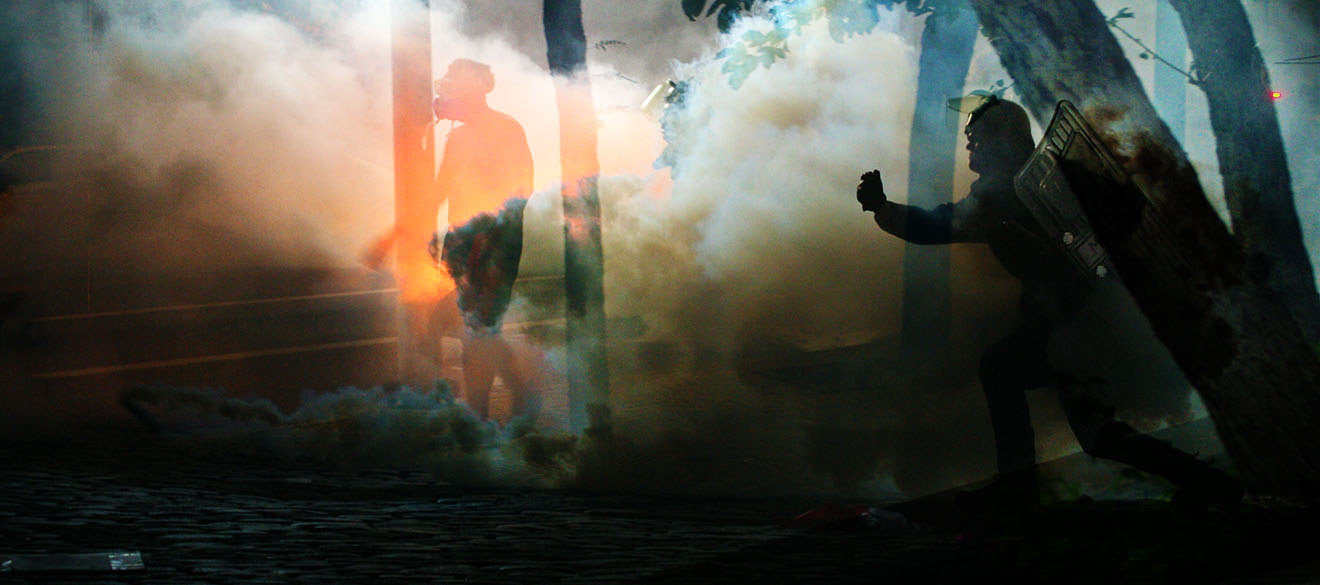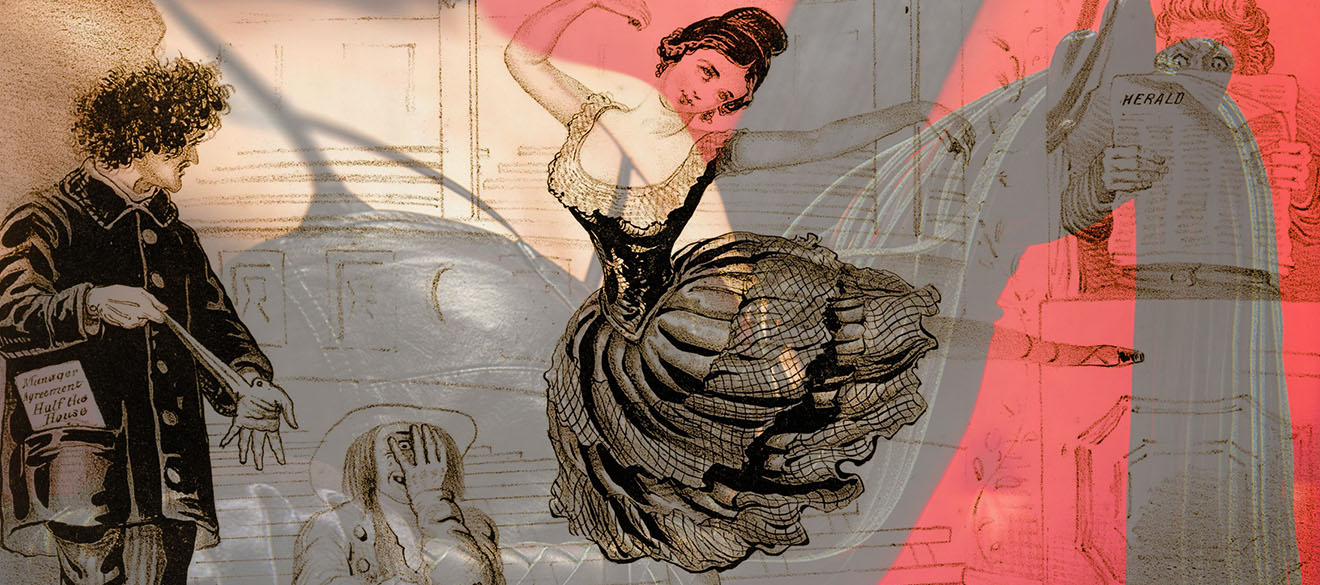Big Brother Is in Your House and in Your Voting Booth
If you’ve been feeling a bit nervous lately about Google-and-the-Gang — well, it’s about time. Google, and, to a lesser extent, other tech companies in the U.S. and China, pose the most serious threats to democracy, free speech and human autonomy that humanity has ever faced.
Recent surveys by the prestigious Pew Research Center in the U.S. confirm Americans are becoming increasingly concerned about how their private data is being used by Google-and-the-Gang and even about the ability of these companies to influence our elections.
If only people knew what I knew. They wouldn’t just be concerned. They would have nightmares.
Since 2013, I have been conducting two kinds of research that have revealed a sinister side to Big Tech. First, I have been conducting randomized, controlled experiments — experiments adhering to the very highest standards of scientific integrity — that have revealed and quantified the power tech monopolies have to alter people’s thinking and behavior without their knowledge. Along the way, I have discovered about a dozen new means of influence that the internet has made possible and that are controlled exclusively by a handful of U.S. tech companies and, within the boundaries of its Great Firewall, the Chinese government.
Second, I set up the world’s first passive monitoring systems: Nielsen-type systems that allowed me to look over the shoulders of real people — with their permission — as they were using the internet in the weeks leading up to the 2016 and 2018 elections in the U.S. These systems allowed me to see whether Google and other companies were actually using the new forms of manipulation I had discovered.
Both types of research have uncovered a world of bad news. Among other things:
The search engine is the most powerful mind-control machine ever invented, and because more than 90 percent of searches are conducted on just one search engine in almost every country in the world, Google is, on a daily basis, influencing the thinking, behavior, attitudes, beliefs, purchases and votes of more than 2.5 billion people worldwide — with no one able to counteract what the company is doing.
As of 2015, Google’s search engine was determining the outcomes of upward of 25 percent of the national elections in the world, and, with internet penetration increasing rapidly, that number has almost certainly gone up since. This is because many national elections are won by razor-thin margins (Julia Gillard and her party won the 2010 election in Australia by a mere 0.24 percent of the vote), and because search results that favor one candidate can easily shift the voting preferences of undecided voters — by up to 80 percent in some demographic groups.
By manipulating search terms — those phrases Google flashes at you while you’re typing a query into its search bar — Google has the power to turn a 50/50 split among undecided voters into an astonishing 90/10 split with no one having the slightest idea he or she is being manipulated.
In both 2016 and 2018, we found substantial political bias on the Google search engine — but not on Bing or Yahoo — bias sufficient to have shifted between 2.6 and 10.4 million votes in the presidential race of 2016 and upward of 78.2 million votes to candidates of one party in 2018.
In July 2019, I testified before the U.S. Congress about such issues, and I also explained how Congress could act to constrain Big Tech. The day before my testimony, I published an article in Bloomberg Businessweek explaining how U.S. or European authorities could quickly and permanently end Google’s worldwide monopoly on search and how doing so would make search competitive and innovative again — like it was before Google destroyed all its competitors.
More than a year has passed since then. Has anything changed?
Since 2017, the European Union has fined Google more than 10 billion euros for violating European antitrust laws, and last year the U.S. government fined Facebook $5 billion for failing to protect user privacy. On May 25, 2018, the EU’s landmark General Data Protection Regulation (GDPR) went into effect, supposedly to protect EU citizens from possible abuses of personal data by tech companies.
Has anything changed?
There have been changes, but they’re all in the wrong direction. Both the revenues and the user bases of Google and Facebook have increased dramatically. When I first began calling for Google’s regulation in 2012, its annual revenue was $50 billion. Since then, the company’s revenue has grown at an increasing rate each year, with no slowdown in sight. In 2018, it raked in $136.4 billion, and in 2019, an incredible $160.7 billion.
Its power and reach have also grown. Last year, Google dramatically increased its ability to monitor the health data of millions of people by purchasing Fitbit, and the coronavirus pandemic of 2020 has further increased its access to health information because of its new partnerships with government health agencies worldwide.
As for that pioneering GDPR, its main effect has been to increase the power of both Facebook and Google in Europe by discouraging startups from entering the tech marketplace. Startups can’t afford to comply with all the GDPR paperwork — only the giants can. Has the GDPR at least protected user data in Europe? Not at all. Google and Facebook are collecting more data than ever; they’re just being more careful about revealing what data they have and how they use it.
Doesn’t Google at least delete the data of EU citizens when they ask it to? Absolutely not. That would be like King Midas flushing gold down the toilet. Google invented the surveillance business model, which has now been adopted in varying degrees by thousands of companies. Under this model, Google entices you into using a wide range of “free” services — Gmail, Google.com, Google Docs, Google Wallet and so on — which, from a business perspective, are just surveillance tools. You and your kids provide the company with an endless stream of personal data, which Google then monetizes. That’s where more than 90 percent of the company’s revenue comes from. Unlike Apple and Microsoft, Google and Facebook sell almost no actual products; for the surveillance-model companies, you and your children are the product.
Google is Very Much at Home
One of the ways Google crushes competition is by buying it. On average, it buys a new company every week. In 2014, for $3.2 billion in cash, Google acquired Nest Laboratories, which manufactured smart thermostats — that is, thermostats that have internet access through your Wi-Fi network. But why buy a thermostat company?
Google bought Nest to better penetrate the boundaries of your home. The first thing they did — quietly — was to add a microphone to the thermostats, and the newest models include cameras. The recent influx of modern smart speakers — Amazon’s Alexa and Google’s Home being the most popular at the moment — is driven by a set of extremely disturbing goals: listening, recording, analyzing, monetizing and influencing. The Stasi in Germany could only just listen — before they arrested you, anyway. But Home and Alexa — not to mention Apple’s Siri, which gets all of its answers from Google, and the Google Assistant on Android phones — are fully interactive, just like the “telescreens” in George Orwell’s 1949 dystopian novel, Nineteen Eighty-Four.
Such devices not only listen and record continuously, they also give you the answers these companies want you to hear.
Lest you think my imagination has run wild, please consider: In 2016, Google was granted a U.S. patent — one of several of this sort — entitled “Privacy-Aware Personalized Content for the Smart Home,” which secures the methodology for intelligently interpreting what its microphones and cameras are observing in your home. If your son has left his T-shirt on the floor, and the camera can see an image of Will Smith on it, Google might let your family know when the next Will Smith film is coming out. If Google’s microphone hears your kids whispering in a way that detects “mischief,” it might alert you or recommend a good family counselor.
How far can they take this? Can they draw conclusions about how good a parent you are, about whether you’ve been cheating on your boyfriend or spouse, about your favorite sex positions and toys? Can they rank your social and economic standing? Of course they can.
Another patent, entitled “Smart-Automation System That Suggests or Automatically Implements Selected Household Policies Based on Sensed Observations,” turns the surveillance data into a means for controlling systems in your house: for sounding alarms, locking and unlocking doors, deducing when you’ve gone on vacation, turning the lights off on your kids when they use “foul language,” and for warning that cheeky babysitter of yours to send her boyfriend home now.
Do you trust this Silicon Valley company to be this close to your kids? You shouldn’t, because those same policies you set for your children can also be set, according to that second patent, “based upon certain inputs from remote vendors/facilitators/regulators/etc.” Google has a long history of sharing our personal data with a wide variety of such entities. They even reserve that right under their creepy Terms of Service, to which we all agree as long as we are using a Google application — even if we don’t know we’re using a Google application.
Google wants us to believe the massive amount of personal data they’re collecting about us and our children will never, ever be misused. But we’ve seen how easily massive amounts of data can end up in the wrong hands — in the hands of election riggers at Cambridge Analytica, for example. It’s not just retailers and banks that get hacked; every major tech company has also been hacked. Through hacking or sharing, even those silly, crazy things you said in the privacy of your home but didn’t really mean might end up in the hands of the FBI or the TSA. Wait! Did I just say “privacy?” What was I thinking?
The home that Google envisions — no, the home that Google has already created when we weren’t paying attention — is an Orwellian wet dream, in which the walls have ears and the thermostat is definitely listening. And those are just the big moves Google has made. Densely packed between each of those moves is the acquiring of multitudes of businesses, intellectual property and technologies — all for the purpose of extracting and interpreting more and more of your personal data.
And those are the moves we know about. For a company this steeped in secrecy and surveillance, with close ties to the NSA and CIA, I’m sure the list we don’t know about is much longer.
People occasionally tell me I exaggerate such matters. But my research over the past seven years has put me in an oddly ironic position when it comes to exaggeration: No matter what I tell you about the threat that Google-and-the-Gang pose to our families and societies, I am, it turns out, grossly understating the seriousness of the problem.
Bear that in mind as we now move from the comfort of your own home (still feeling comfortable there?) to the sanctity of the voting booth.
Google in the Voting Booth
In June 2016, a few months before the U.S. electorate — or least our archaic Electoral College — selected Donald J. Trump to be our president, a small news outlet called Sourcefed released a dramatic seven-minute video that claimed Google was deliberately suppressing negative search suggestions for candidate Hillary Clinton (such as “Hillary Clinton crimes,” which Google Trends showed people were searching for in large numbers) while suggesting only positive terms (such as “Hillary Clinton crime reform,” which Google Trends showed virtually no one was searching for). Google was not suppressing negative search terms for people like Donald Trump (“Donald Trump racist”) and Bernie Sanders (“Bernie Sanders socialist”).
Unfortunately, Sourcefed posted their video on Google-owned YouTube — what were they thinking? As views of the video rapidly approached the million mark, Google blocked access to it.
Impossible, you say. Isn’t Google’s company motto: “Don’t be evil?” Sorry, but Google officially dropped that motto in 2015. As I said, you haven’t been paying attention.
Fortunately, the three-minute version Sourcefed posted on Facebook — which, alas, cut out all the references to my research — survived Google’s censorship and soon passed 25 million views.
That video inspired me to begin conducting experiments on search suggestions, which led to my discovery of the Search Suggestion Effect or SSE. Those experiments have revealed a number of disturbing things about search suggestions, among them:
(a) One of the simplest and most effective ways to use a search engine to shift opinions or votes is to suppress negative search terms for the candidate or cause or company you support, while allowing negative search suggestions to appear for the other candidate or cause or company.
(b) This shift occurs because of a well-known behavioral effect called “negativity bias” — also known as the “cockroach in the salad” effect. Negatives draw lots of attention and thought. That little cockroach in the middle of that big salad ruins the whole salad, does it not? When it comes to search suggestions, we learned that a negative search term can draw between 10 and 15 times as many clicks as a neutral or positive term. So a suggestion like “Donald Trump racist” will draw a lot more traffic than a suggestion like “Hillary Clinton crime bill,” at least for undecided voters, and those are exactly the voters Google wants to influence to tilt an election. That’s why suppressing negatives for your favorite candidate can shift so many votes.
(c) When we manipulate people by using biased search suggestions, people have no idea they’re being influenced. Manipulations that people can’t see are extremely dangerous, because when people can’t see a source of influence, they mistakenly conclude they have made up their own minds.
(d) Like bias in search results, answer boxes and newsfeeds, search suggestion manipulations are what Google insiders call “ephemeral experiences” — that is, fleeting experiences that impact users and then disappear, leaving no trace. In other words, authorities can never prove that SSE has been used on a large scale. There is no way to go back in time to see what search suggestions, search results or newsfeeds people were being shown. And Google employees know that. That’s why I developed monitoring systems — to preserve those ephemeral experiences. In 2016, I preserved 13,207 election-related searches on Google, Bing and Yahoo, along with the 98,044 web pages to which the search results linked. In 2018, I captured more than 47,000 searches and nearly 400,000 web pages. Once you capture such content, you can look for bias or censorship, and you can quantify it.
Over the years, I have been discovering, studying and quantifying a number of new forms of influence like SSE, every one of which is controlled exclusively by Big Tech companies. Unlike billboards, television commercials and ads posted on Facebook by election campaigns or Russian agents, these new forms of influence are both invisible and noncompetitive. If Facebook or Google wants to flip an election, there’s nothing you can do about, and, at least in the U.S., there are no laws or regulations forbidding it.
In the 2020 presidential election, I’ve calculated Google-and-the-Gang can shift 15 million votes — more than enough to select the next president. And over the past year, whistleblowers from both Google and Facebook, along with leaked videos and documents from Google, have made it clear these companies will not allow Trump to be reelected.
I’m not a Trump supporter. I’m not even a conservative. But I believe strongly in democracy, and the more I’ve learned about Big Tech companies, the more outraged I’ve become by the power they wield and by the abject failure of our leaders to constrain that power.
In my opinion, 2020 is the watershed year on this issue. It is either the year we turn over democracy, free speech and human autonomy to Google-and-the-Gang — or the year we fight them.
How to Fight Google
Outside China, which takes great pride in using emerging technologies to surveil and control its population — sometimes with Google’s help — Google and, to a lesser extent, other Silicon Valley tech companies pose the greatest threat to humanity it has ever faced. Over the past year or two, and with increasing frequency, I have been approached repeatedly by members of the U.S. Congress, by the attorneys general of several U.S. states and by White House staff, all of whom are concerned about the obscene power of Big Tech.
Some of these officials are conducting investigations, and some members of Congress have held hearings.
But no laws or regulations will ever keep up with rapidly changing and emerging technologies. By the time a piece of legislation is passed, the tech companies have outgrown it by decades.
So what, if anything, can we do?
On a small scale, we can all take steps to safeguard our privacy and the privacy of our family members. For details, please see my article at MyPrivacyTips.com, which begins, “I haven’t received a targeted ad on my computer or mobile phone since 2014.”
At the societal level, I know of only one way, both in the short term and in the murky future to come, that we can protect ourselves from domination by Big Tech, and that is to build a permanent worldwide network of passive monitoring systems — large-scale versions of the systems I set up in 2016 and 2018.
These systems will monitor the content tech companies are showing people on their screens and telling people on their personal assistants. Monitoring systems are tech, so they can keep up with whatever the tech companies are throwing at us: surveillance and control mechanisms built into the rapidly growing internet of things, wearables and self-driving vehicles, for example. Looking ahead, monitoring systems will even be able to detect and expose manipulations implemented through the biological implants that will make our children and grandchildren especially vulnerable.
Alas, since I’m guessing you’ll be reading this essay not long before the November presidential election in the U.S., I need to end on a dark note. In 2016 and 2018, my associates and I had relatively little trouble raising funds to build online election monitoring systems. It’s common sense, after all. Monitoring systems must exist to preserve those ephemeral experiences Google employees are so proud of.
But this year — the watershed year, as I said — we were unable to find funding, at least in part because the coronavirus has frozen many funding sources. This means that in this critically important election, we will have no idea how Big Tech was interfering, even though I have no doubt that they are interfering at this very moment on a massive scale.
It also means the Democrats are likely to sweep Washington, D.C. That doesn’t bother me, except that early next year both Congress and the White House will almost certainly shut down every single investigation of Big Tech shenanigans that has been initiated in recent years.
From that moment forward, the big threats these companies pose to humanity — the ubiquitous surveillance, the politically biased censorship, and the invisible manipulation — will become permanently embedded in countries around the world.















































